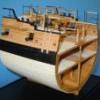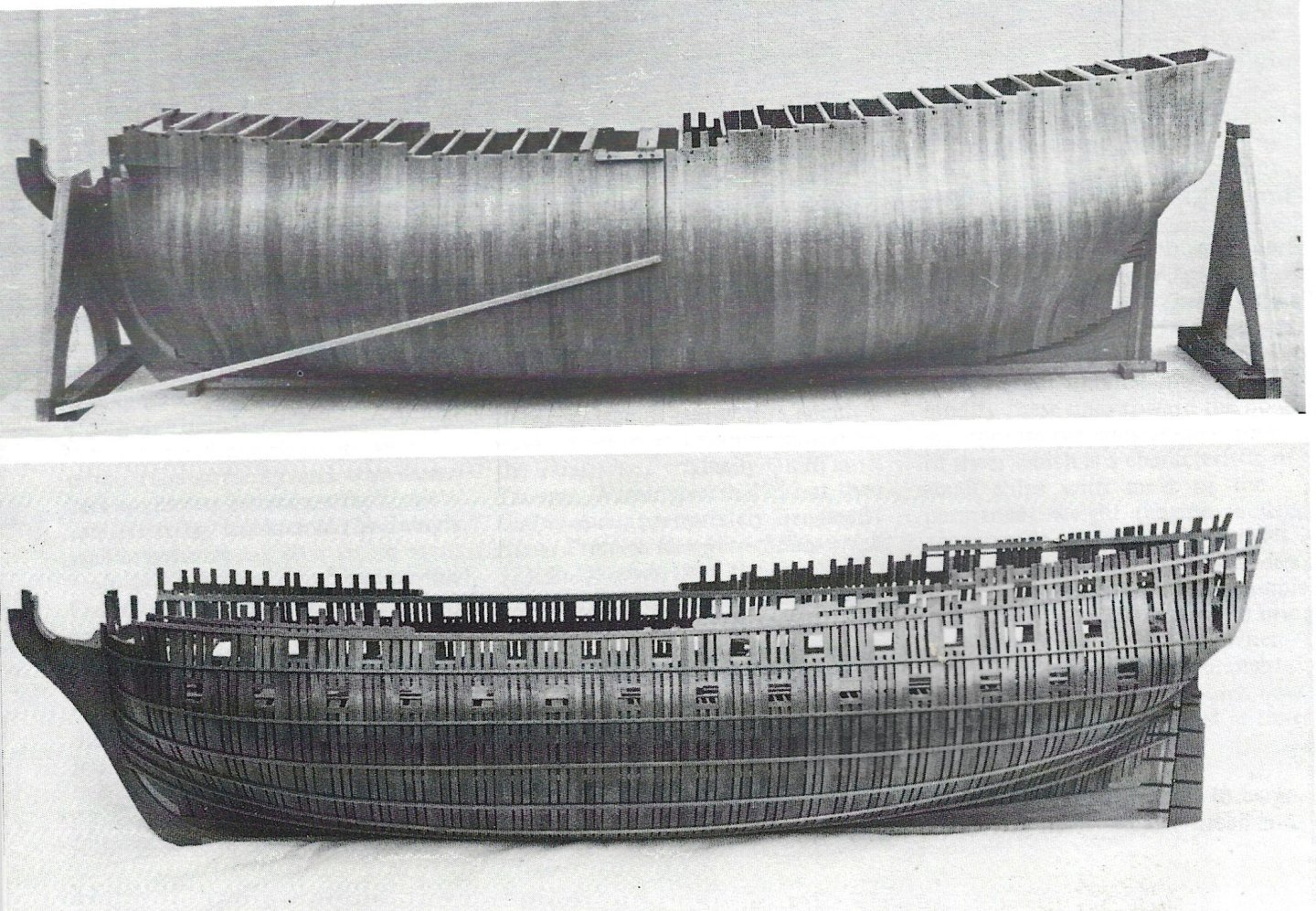-
Posts
2,420 -
Joined
-
Last visited
Content Type
Profiles
Forums
Gallery
Events
Posts posted by dvm27
-
-
Good luck with those wales Alan. Oddly, I've seen models where these joints were so well done that, after staining or painting, they were no longer visible. Their solution was to lightly chamfer the outer edges
-
-
Congratulations on the completion of yet another fine build, B.E. A very clever presentation as well, saving you a lot of vertical space!
- hollowneck, Blue Ensign and Ryland Craze
-
 2
2
-
 1
1
-
-
For anyone else enchanted by this lovely model feel free to check out this video on YouTube https://www.youtube.com/watch?v=GPCAArQ7APY. It depicts both of the Phil Reed's Speedwell models (Chuck's version and a Speedwell on a roiling sea). Notice the lovely catenary of the rigging, something I believe you can only do with wire rigging.
-
-
-
-
Lovely capstan Chuck. Personally, I'd go for the red. The natural color ghosts out against the background. The red would pop like the other fittings along the centerline of the ship.
- KentM, Rustyj, Ryland Craze and 2 others
-
 5
5
-
I have no dust collection system either Shawn so I typically do my fairing ourdoors. Obviously not ideal for your Nebraska winters but anything above 50 degrees was fine with me. If you're using cedar I think 40 grit is a bit aggressive and I'd start with 80. Repeatedly applying pencil marks to the frames will show you the low spots. Ultimately, the sound of the fine paper (220 grit) and running your hands over the surface will tell you when you are done. Start by fairing the midships frames then proceed to the fore and aft frames. If one frame still has pencil marks while those fore and aft of it are faired then re-evaluate the frame. If it was installed with an inward cant then all the other frames could be affected. In my Speedwell model I had to replace a fore frame for this reason during the fairing process.
- sfotinos, JpR62 and Ryland Craze
-
 3
3
-
Well, that took considerably less time to frame than Pegasus I'll bet!
- druxey, Trussben and Ryland Craze
-
 3
3
-
-
I know what you mean Mike. Looking over the framing, knees, etc of Constitution and Constellation I am awed by both the size and fit of the massive timbers. That they were able to piece these timbers together with hand tools and simple rigging makes me marvel at their craftsmenship.
-
That's a flawless collaberation between you and Chuck. If you were going for that contemporary ivory look you nailed it!
- Ryland Craze, scrubbyj427, CiscoH and 1 other
-
 4
4
-
-
Great job Chris! It looks like those frames should fair in nicely. Your photograph reminds me of the famous Egmont model by John Franklin (Model Shipwright series) in which he assembles, fairs then separates the solid hull and reduces the frames to achieve the Navy Board appearance. His method is not commonly used (except by miniaturists) but seems to have many advantages over the way we currently build them.
-
-
It's looking great Clare. I found her sister, Speedwell, very easy to rig. As I recall the Wolf rigging plan provided was very good. As well, you can find excellent rigging instructions in our Speedwell, Vol. 2. She does have a rather nice lofty rig so your display space will need to double perhaps.
- hollowneck and druxey
-
 2
2
-
I think silk rigging looks beautiful and I know many of the Navy Board models were rigged this way. I have also seen silken robes from previous centuries and they look fine (perhaps because they are preserved in a museum). But I now read that while silk can survive decades they start to deteriorate through a process called "shattering" (the short cross threads become unwoven) at around 60 years. Perhaps this appears in garments only and not laid up rope? But I am fairly certain that no restorer in 2300 will be able to replicate Johann's magnificent work here if the rigging starts to deteriorate.
-
Spot on Chris. The rabbet transition is particularly well executed!
-
What a delight it was for David Antscherl and myself to stumble upon this model after the NE Ship Modelers Conference. I have his books but the model in person is even more impressive. I wonder what Ed is up to now?
-
Do you need to deal with laser char between adjoining pieces?
-
-
Nice video on blackening Kevin. Some random thoughts - I use either alcohol or acetone as a degreaser. Also, keep in mind that brass is an alloy and, depending on the composition, some brass is much more difficult to blacken. For large groups of pieces I find that pickling first makes a difference in the blackening and uniformity of the finish. For small pieces you can use a paint brush to polish them in a deep tupperware piece so they don't fly away. Polishing prevents the finish from transfering to surrounding pieces and evens out the finish. Finally, while it's easier to blacken the Swan PE sheet whole don't you find that you still have to blacken the cut edges after removal from the sheet?





HMS Thorn by Kevin Kenny - 1:48 scale - Swan-class - David Antscherl practium
in - Build logs for subjects built 1751 - 1800
Posted
If I'd taken the time to blog in addition to building the prototype Swan class model I'd still be building her! Not only have Kevin's modeling skills improved dramatically but his video work has progressed from amateur to pro.